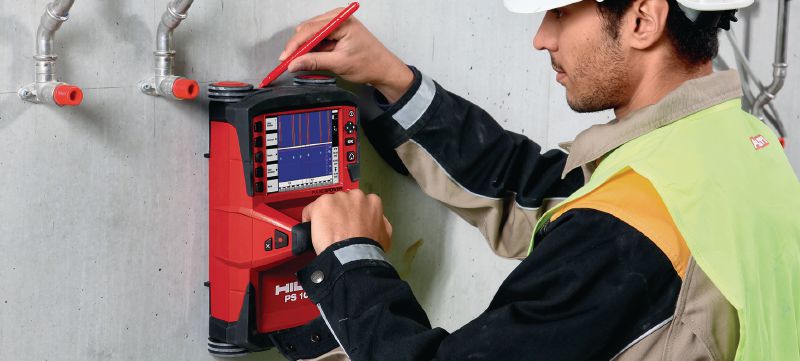Exploring the Midst: A Comprehensive Guide to Concrete Scanning and Its Diverse Applications
In the world of building and construction and framework advancement, the thorough process of concrete scanning holds a crucial function in making sure the architectural honesty and safety of projects. As innovation continues to evolve, the applications of concrete scanning have actually expanded much beyond simple surface-level analyses.
Importance of Concrete Scanning
Understanding the relevance of concrete scanning is important in making certain the safety and honesty of frameworks during building and improvement jobs. Concrete scanning utilizes innovative modern technologies such as ground-penetrating radar (GPR) and electromagnetic induction to spot embedded things, spaces, or other abnormalities within concrete structures - RainierGPR Concrete Scanning. By conducting comprehensive scans prior to exploration, cutting, or coring right into concrete, building teams can stay clear of unexpected damages to vital structural aspects like rebar, channels, or post-tension cables. This aggressive technique not only stops costly repair work and job delays however also enhances total construction security by alleviating the threat of structural failures or collapses as a result of endangered stability.
Furthermore, concrete scanning plays a crucial duty in making certain compliance with building regulations and policies that mandate the defense of existing structural components throughout construction activities. By precisely drawing up the internal structure of concrete, scanning technologies allow building and construction specialists to make enlightened decisions that support the structural security and toughness of buildings and facilities tasks. Essentially, the relevance of concrete scanning depends on its capacity to secure both the structural stability and the workers associated with construction ventures.
Technologies Used in Concrete Scanning
Concrete scanning relies on innovative technologies such as ground-penetrating radar (GPR) and electromagnetic induction to precisely spot ingrained things and abnormalities within concrete frameworks. Ground-penetrating radar runs by producing high-frequency electromagnetic waves right into the concrete.
Electro-magnetic induction, on the various other hand, works by generating electro-magnetic areas around a concrete framework via a transmitter coil. When metal items exist within the concrete, they disrupt these magnetic fields, triggering eddy currents to move with the metal. By determining the adjustments in the electro-magnetic fields with a receiver coil, the system can determine the location of metal things in the concrete.
These sophisticated technologies play a critical duty in non-destructive screening, making sure the security and stability of concrete frameworks in numerous markets.
Applications in Construction Industry
Within the building market, concrete scanning technology discovers varied applications that enhance job efficiency and safety. In addition, concrete scanning is used for situating gaps, such as air pockets or areas of degeneration within concrete, which can jeopardize the general toughness of a framework. Concrete scanning plays a critical duty in quality control by confirming the thickness of concrete covers over support, guaranteeing conformity with style specs and standards.

Security Advantages of Concrete Scanning
In the realm of building and construction safety and security, the implementation of concrete scanning technology offers a critical advantage in preemptively identifying potential threats and strengthening structural integrity. By utilizing sophisticated scanning approaches such as ground-penetrating radar (GPR) and electromagnetic induction, building groups can properly find rebar, post-tension wires, channels, and other concealed objects within concrete frameworks. This proactive technique considerably reduces the danger of unintended strikes throughout boring, reducing, or coring tasks, thus preventing costly damages, injuries, and task delays.
Moreover, concrete scanning boosts worker safety navigate here by providing real-time information regarding the architectural problem of concrete aspects. This information allows construction specialists to evaluate the stability of existing frameworks, recognize damage or defects, and make notified decisions regarding repair and upkeep procedures. By attending to possible safety worries immediately, concrete scanning adds to creating a safe functioning environment and minimizing the possibility of architectural failings or mishaps on building websites. Eventually, the security benefits of concrete scanning not just secure assets and lives however also promote industry standards for high quality and dependability.
Future Fads in Concrete Scanning
Emerging developments in scanning modern technology are positioned to revolutionize the area of concrete assessment and evaluation. One major trend that is getting grip is the assimilation of fabricated intelligence (AI) and maker understanding algorithms right into concrete scanning tools. By using the power more helpful hints of AI, these systems can evaluate vast amounts of data accumulated throughout scanning processes to provide even more in-depth and exact insights into the problem of concrete frameworks. This can assist in discovering hidden problems, forecasting prospective structural failures, and even recommending maintenance techniques.
An additional significant trend is the growth of more mobile and straightforward scanning gadgets. Miniaturization of scanning equipment permits simpler access to constrained rooms and remote places, making evaluations more reliable and detailed. Furthermore, improvements in cordless interaction technologies enable real-time information transfer and evaluation, helping with quicker decision-making procedures.
Additionally, there is an expanding concentrate on sustainability in concrete scanning innovations - RainierGPR Concrete Scanning. Manufacturers are increasingly including environment-friendly products and energy-efficient functions into their gadgets to decrease environmental effect. These future patterns are readied to improve the efficiency, precision, and sustainability of concrete scanning practices, shaping the industry's future landscape
Final Thought
In final thought, concrete scanning plays a critical function in the building sector by making sure the safety and performance of numerous jobs. As technology advances, the future of concrete scanning holds encouraging Read More Here growths for boosting building and construction processes.
